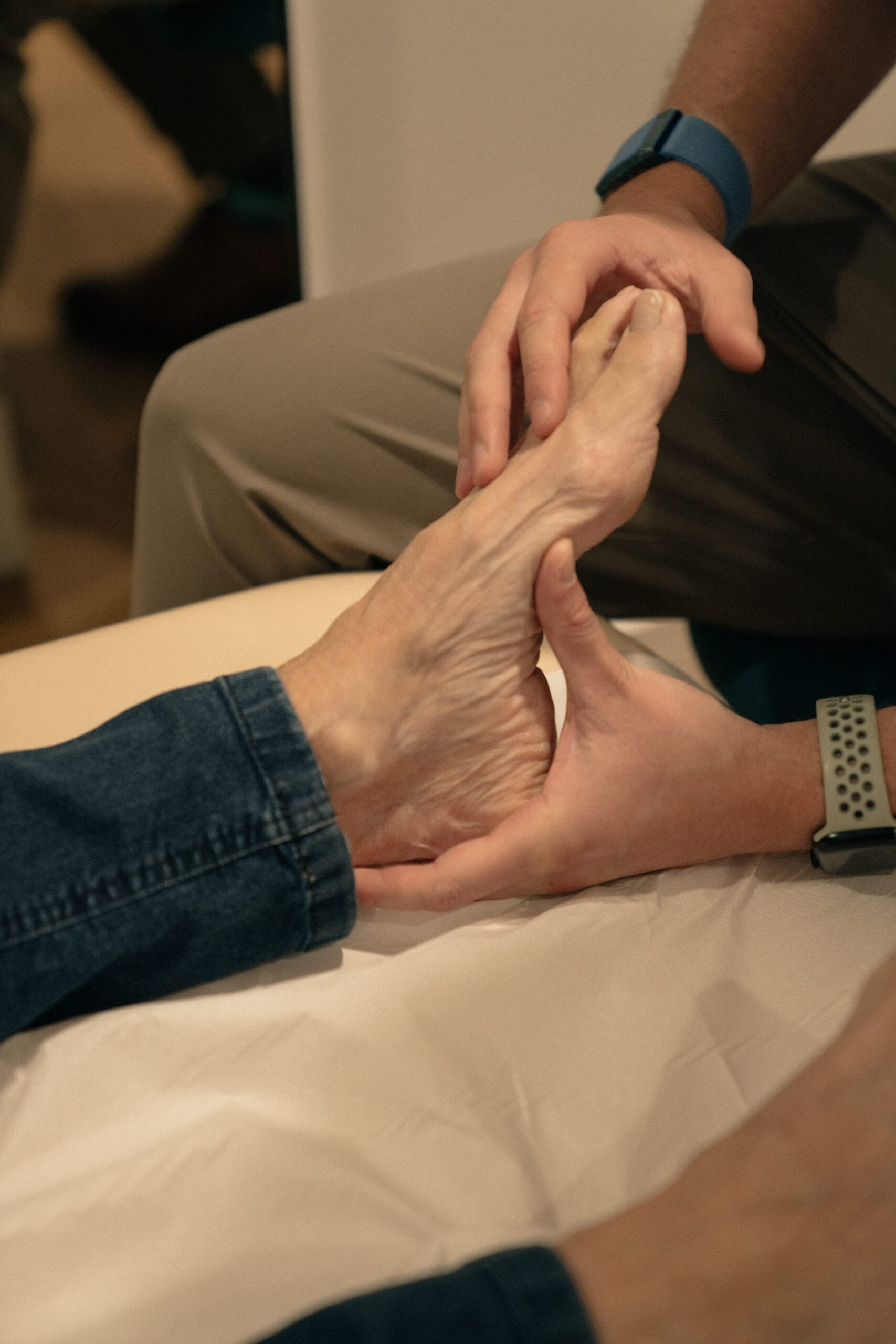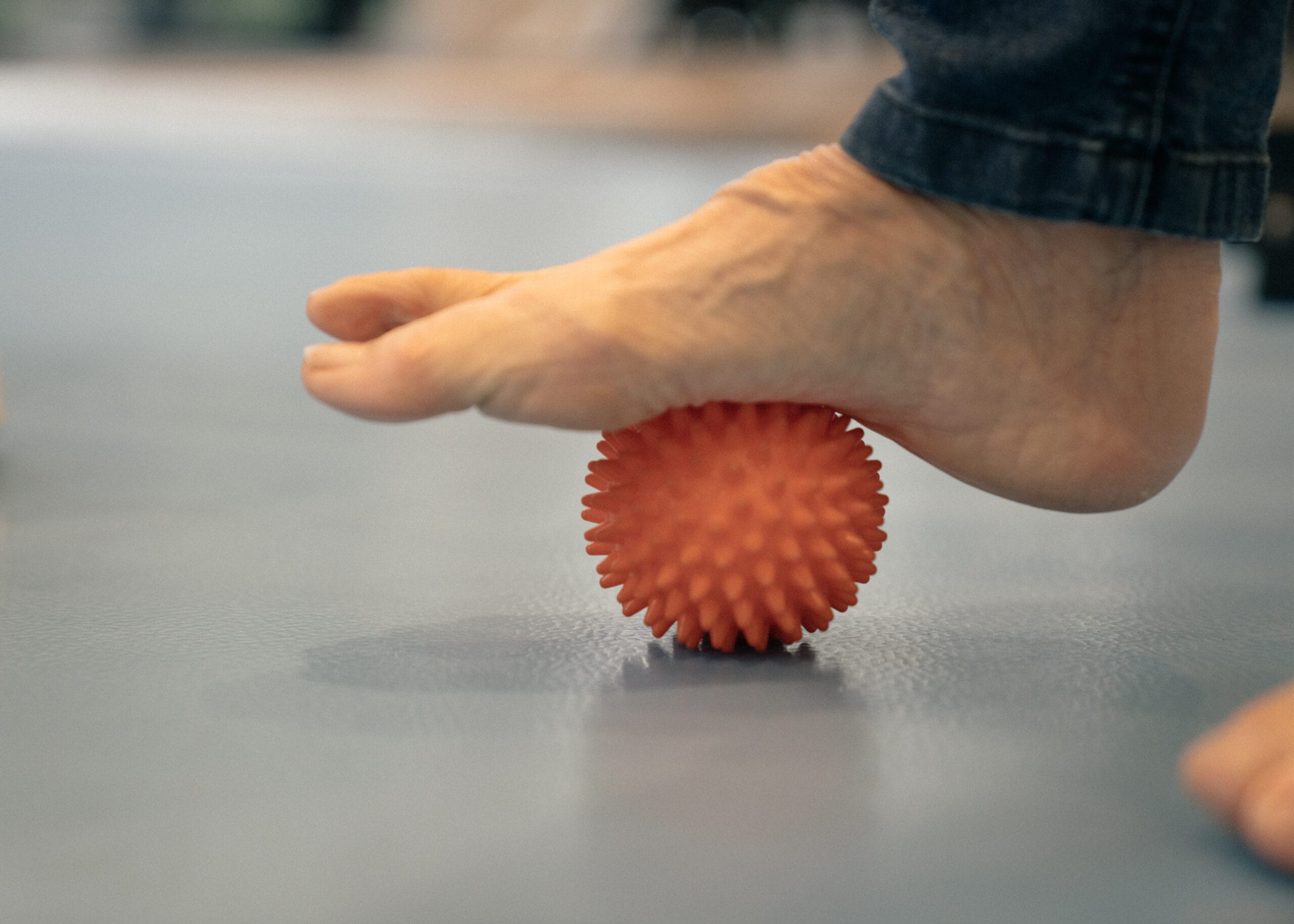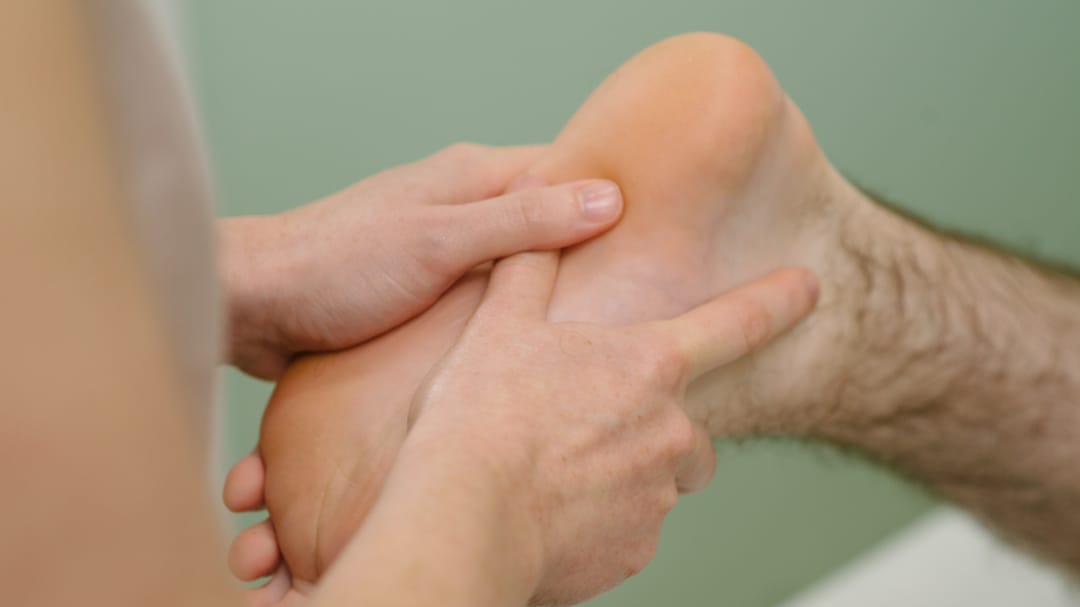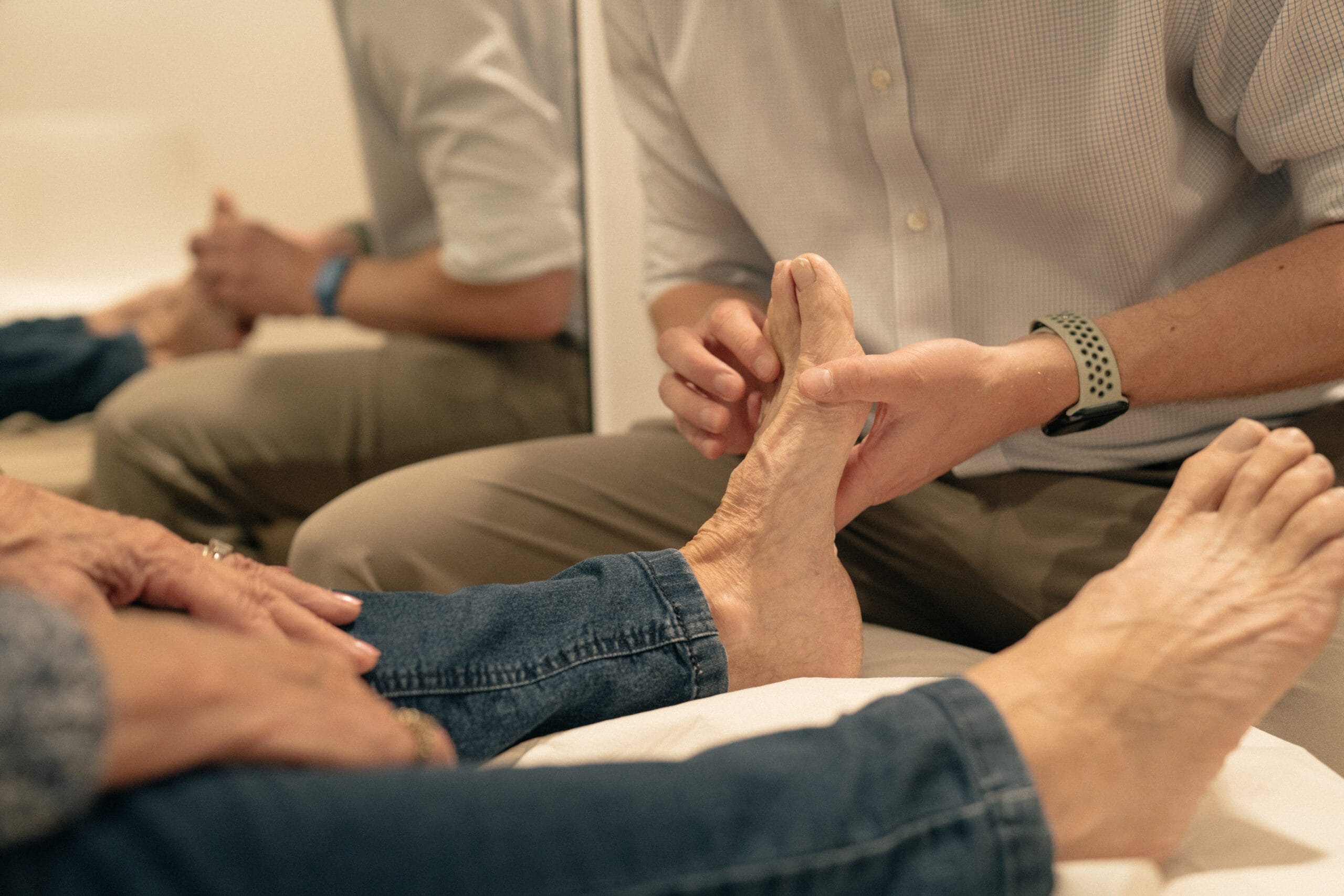Look After Your Feet: A Pilates, Physio & Podiatry Perspective

Joanna Manos
Pilates Instructor
- 11 July, 2017
- Podiatry
- 5 min read
Look After Your Feet: A Pilates, Physio & Podiatry Perspective
You go to the gym for a well-rounded workout. Core, glutes, legs, arms, and their respective stretches, and you walk out feeling energised and complete. That positive feeling after exercise is really very important, but was it really complete? Did you forget those bits on the end of the body? The hands and the feet?
In this blog, the team will take a look at the feet, possibly the most used and abused part of the body:
- The pressure on your feet when running can be as much as 4 times your body weight
- A two-and-half inch high-heel can increase the load on the forefoot by 75>#/li###
- Ideally, the foot should be supple enough to adjust for uneven surfaces but also have the internal ability and strength to transform from a flexible foot into a rigid lever to propel off.
And we can hear some of you saying, “But I walk, I run, I do plyometrics, how can that not be enough for my feet?”
Then there’s the “chicken or the egg” argument. “The doctor told me my foot pain originates in my back”. Or is it possible that the poorly functioning foot has had a knock on effect on the alignment higher up?

The Pilates Perspective
One of the main Pilates principles is alignment. We are looking for a good alignment of the bones to prevent undue strain and imbalance in our muscles. A lot of Pilates work is seen lying on a mat. Whether you are lying on your back, front or side, the initial goal is to get the spine, pelvis and head in proper alignment and then work our way out to the limbs. That helps develop our body awareness, and hopefully, when we come to standing, we can find that good position.
But when we stand, we have that little neglected platform at the bottom, our feet. If our feet function correctly, all is good. If, on the other hand, they have been somewhat abused, then the platform might not be as sound. It might be that one foot is a bit stiff, and without noticing, we might be standing like we have one or both feet on uneven ground. The foot, if working properly, should be able to cope with uneven grounds. If the foot, for whatever reason, isn’t able to deal with the demand of uneven surfaces, then this can have implications further up the lower limb into the back.
The foot, just like other parts of the body, has its extrinsic muscles that originate from higher up (shin bone) and then it has the intrinsic muscles which originate and attach within the foot structure. I like to think of the latter as your core muscles, working quite subtly to provide stability. When the core is not working, the extrinsic muscles have to do a little extra work, and as we are all very different (a good thing!) in how our feet are aligned when we stand, this may lead to overloading particular areas.
Alignment – 25% of all the bones in the human body are in the feet. As we know, we are all aligned and made differently (isn’t it great!), and this extends to your feet. So when looking at the feet, we embrace the variation between people in how we stand, walk and run, but we know this means some of us will put more pressure through different areas, and that’s where extra strength and mobility is always helpful.
Aging – The soles of our feet contain more sweat glands and nerve endings per cm² than any other part of the body. Those sensory endings give us feedback from the ground up. With age, our senses start to deteriorate, so in the case of the feet, that means less feedback from the ground, putting one at risk of injury and falls.
Increase mobility – Our feet are often confined in ill-fitting shoes for the greater part of the day due to work requirements or in the name of fashion, and while well-fitting shoes can offer protection and allow for comfortable mobility, this can’t always be achieved.
So, what next? Mobilise, stabilise, strengthen- just like everything else!
There are many exercises one can do for the feet, which would take me pages to describe, so we will pick a few simple ones. Try them before getting on the treadmill or after you wake up, and you will probably feel a bit more “springy” with energy travelling up the lower limb.
- Seated, cross one foot over the other knee as in figure 4, gently flex the ankle and curl your toes as if over a pencil and release. x10.
- Take hold of your forefoot (thumbs on top fingers under the foot) and massage it gently as if you wanted to spread the metatarsals stretching the top part of the foot out from side to side. Repeat on the other foot.
- Stand up and feel the triangle of support from the middle of the heel to the base of the big toe and the base of the little toe. Lift all 5 toes up, then press them down into the floor. Avoid curling the toes as you press them back down. x6
- Short foot. Keeping the toes flat, draw them towards your heel and feel the arch of the foot lifting. Release back down x10
- Gently roll your foot on a tennis ball or a spiky ball. Start with the ball centered between the big and 2nd toes and roll to your heel and back, then move the ball between the 2nd and 3rd toes and roll to heel and back. Repeat going along all the lines until you reach the pinky toe. Start with very light pressure on this one if you haven’t done it before
- Repeat all standing work on the other foot
Try your BOSU work barefoot or in socks, feel those small muscles work and let them help you balance.
Start gently and see how the body responds.
And for something less regimented, just use your feet more. Pick things off the floor with your toes. A ping-pong ball is a nice size and light, socks are easy, and the foot becomes a helping hand. For maximum points, go for a pencil.
Favourite family beach activities:
- Use your foot to fill your shoe with pebbles
- Massage the toes in the sand
- Balance on one leg in knee-deep water

Podiatry & Orthoses
Podiatrists can use orthoses to help complement the rehabilitation and prevention of foot and ankle injuries, and they are most effectively used with comfortable footwear and targeted exercise programs.
When looking at our patients, we embrace the variation between feet and develop individualised models of foot function depending on the person in front of us. Therefore, our approach to management and use of orthoses is in line with this individualised approach by:
- Identifying the structure in the foot/ankle that is causing symptoms
- Assessing the influence of the foot structure and movements on why the symptoms are present
- Then, identify how we can stop the structures in the foot or ankle from causing symptoms
Reducing the stress on what’s sore in the foot and ankle is commonly achieved by using footwear and orthoses to lower the load on the sore areas by redistributing it across the healthy areas. By achieving this, orthoses help optimise healing but also allow exercise programs aimed at increasing our strength and mobility to progress.
If you want to book an appointment with one of our podiatrists or pilates instructors, follow the link online or call the clinic you’d like to visit.

Advice
Over the last 20+ years our experts have helped more than 100,000 patients, but we don’t stop there. We also like to share our knowledge and insight to help people lead healthier lives, and here you will find our extensive library of advice on a variety of topics to help you do the same.
OUR ADVICE HUBS See all Advice Hubs

